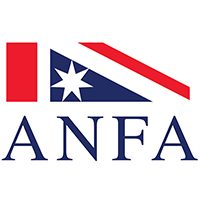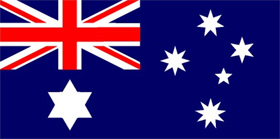Our national flag was first flown on 3 September 1901 atop the main dome of the Royal Exhibition buildings in Melbourne. The unique design resulted from a public competition which was won by Leslie Hawkins, Ivor Evans, Annie Dorrington, Egbert Nuttall and William Stevens. The giant, blue flag, 11 metres long, was raised in the presence of Australia’s first Prime Minister, the Hon. Edmund Barton and was witnessed by a large and enthusiastic crowd. Lady Hopetoun, wife or the first Governor-General was Guest of Honour. Our flag of “stars and crosses” was raised in the presence of His Excellency, The Governor-General at Townsville, Queensland on 16 September 1901. In 1903 the points on the stars of the Southern Cross were standardised to the pattern of today. The original concept was to represent the relative brightness of each star in the constellation with the stars of the Southern Cross having 9, 8, 7, 6 and 5 points. The Commonwealth Star, symbol of Australian Federation, had six points, representing the six States. In 1908 a seventh point was added to encompass all Australia’s federal territories. The Southern Cross represents our position in the southern hemisphere; the Commonwealth star, the federation of our States and Territories and the crosses of St George, St Andrew and St Patrick represent the principles on which our Nation is based including, parliamentary democracy, rule of law and freedom of speech.

